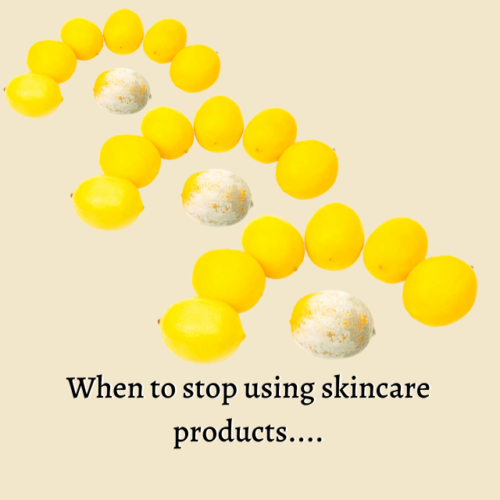My process of being a cosmetic formulator constantly causes me to worry about cosmetic stability of products and contamination
No-one wants to use products where the oils and fats separate from the water.
A product that breaks down like that is also likely to have a broken-down preservative system, which is essential to give a product a shelf-life beyond a few days and also prevents fungal and bacterial contamination.
But what happens if a product looks dodgy before the use by date?
There is a recent beauty trend trying to convert Ayurvedic products into Western style products. The real-life example that I have is of kumkumadi taliam.
Kumkumadi tailam is an Ayurvedic recipe that causes skin brightening. I cannot recommend Kama Ayurveda’s product (see my REVIEW) enough – it is a grade A skin brightener and if you are not prone to acne, then its an excellent addition to your anti-ageing skincare routine.
What’s the issue?
The preservative in Ayurveda is stable: a typical Kumkumadi tailam has over 20+ natural herbs (if not more) including saffron, licorice, manjistha, goat’s milk etc. Part of the process of making the oil is macerating the herbs into oil over very low heat over days.
Modern creams /masks are using kumkumadi tailam to give consumers more choice. Don’t want to use a smelly oil? Here is a mask or an aloe vera gel or a cream that you could use instead.
I thought this was a great idea until I opened all the kumkumadi products and one “washed ghee” I had ordered. Only one of these five products were stable
SADHEV Aloe Vera and Saffron gel
The product smells like musty saffron. And as you can see the surface is full of small craters. The craters are likely to be collapsed bubbles, which in a closed container can only be formed by bacteria or fungal activity. Its trapped carbon dioxide bubbles that have collapsed: think of yeast formation in dough. Its exactly the same principle. Also, note the completely off colour of saffron in the gel.
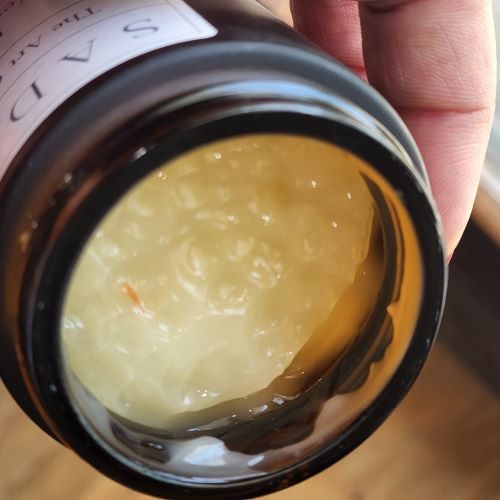
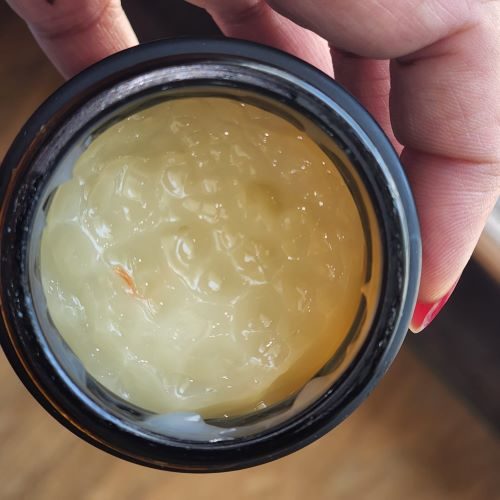
INATUR Ayurveda Face mask
Clay masks are notoriously difficult to stabilise and this is why in climates such as India, you find more dry powder masks. I used to believe it was the cost but I have changed my mind: the risk to consumer of buying a defective pre made clay mask is high.
See the pockets or crates on this mask? Also notice how the mask has left the sides of the container.
For me, the mask smells 100% off. I would not touch it with a barge pole.
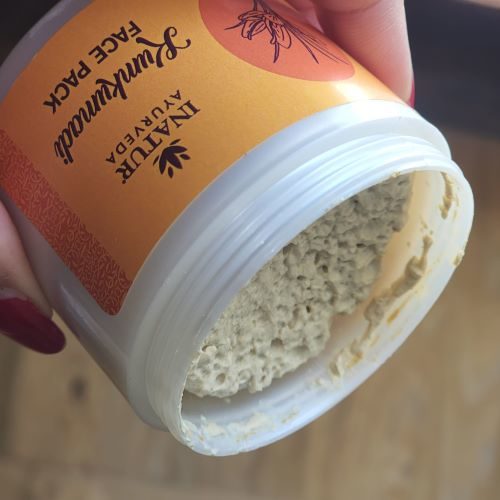
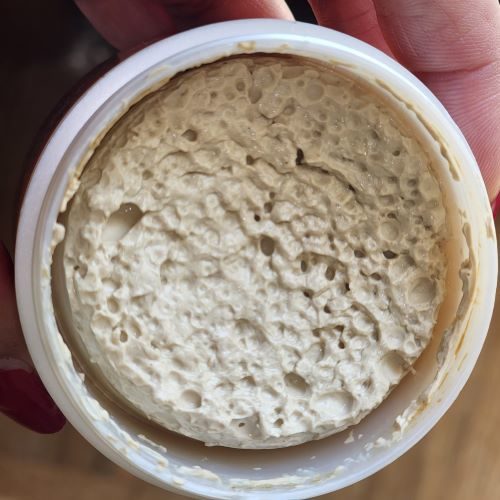
auravedic Kumkumadi mask
The crater formation is not as bad with this mask – but as you can see – its just starting.
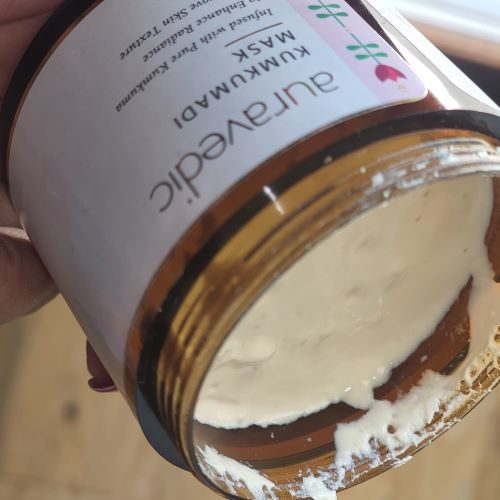
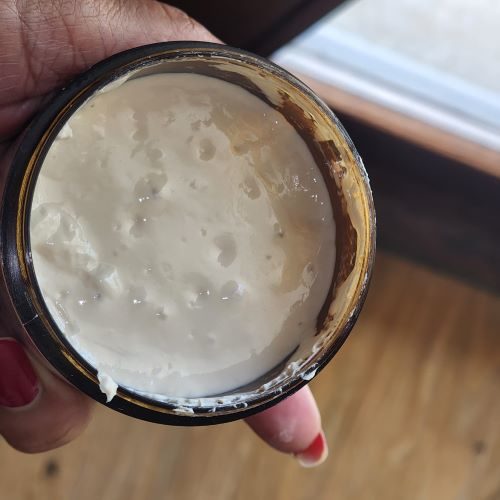
And my final words…
Even if the product you have purchased is completely brand new, you have stored it under careful storage conditions, it is still possible for the product to degenerate. Use your nose, look-out for unusual activity and when in doubt, don’t use the product.
